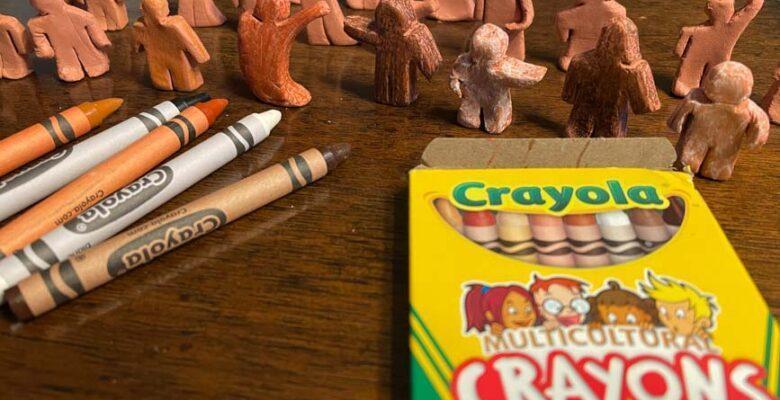“Remember that you are dust, and to dust you shall return.”
~Book of Common Prayer p. 265.
This is a difficult, somber, and confusing proclamation for children to hold. Making clay figures together is a way to invite children into what it means when we say this. “Dust” is a reference to Genesis 2:7, “then the Lord God formed man from the dust of the ground, and breathed into his nostrils the breath of life; and the man became a living being.” Aside from just being fun to play with clay, an exercise like this has lots of opportunities for theological conversation around identity and what it means to be made by God.
Supplies & Instructions
Here’s what you’ll need:
- Some bits of clay for each person
- Some type of cutting instrument for shaping the figures (a piece of cardboard works just fine)
- Some flesh toned crayons which will add skin tone after the figures are dried – we recommend these multicultural crayons
This activity can be done over Zoom or in-person. You can add an extension of the lesson around race and skin color using the reflection questions below.
The steps of the process can be found in this worksheet and this video offers some extra tips!
Reflecting Together: Four Ways to Wonder
- Wonder about our equality – “I wonder if this person feels like a sibling to all the other figures?” The intrinsic similarity through the same clay material of all figures gets at the lesson that ALL people are equally children of God. To God we all look the same. **DO NOT use multiple colors of clay!
- Wonder about what makes us unique – “I wonder what this figure says about you?” We are not cut out by God according to a pattern, but each of us is molded in uniqueness in a way that only clay can express. When it is still moist it is incredibly easy to change and shape. Even if you have a pretty flat cut out figure, try moving a hand or turning the head a bit before it dries. Without much thought at all, individuals start to come alive from the clay. This communicates that God created the depths of our personalities, the things that make us each who we are, far more than just the shapes of our bodies. To draw this out from the kids, try asking about who each character is and why the child thinks so.
- Wonder about other people – “I wonder if you would be friends with this figure?” While kids get to express themselves and share who they are in the figures they make, the real community value is in sharing these figures with each other. Everyone in the group gets the chance to reflect on the different approaches that they took and the ways our figures are different from each other while still being made of the same stuff. If a kid makes a figure to represent themselves, ask them if they might also make another figure to represent a neighbor or someone different from them, or even a bully or someone they don’t like.
- Wonder about race and skin color – “I wonder if this person can see the red color in the other figures or only sees the crayon?” You might choose to go more directly into a discussion of antiracism by asking the kids to color the figures when they dry. If so, we suggest using these multicultural crayons. Unlike markers or paint, the wax leaves an imperfect covering over the clay so you can tell just how thin and minor a difference our skin colors are. Since you can still tell that they are the red clay underneath it’s a great way to return to the message of our fundamental equality as children of God.
This exercise is a way to bring our intrinsic equality as children of God to the minds and hearts of folks in your community. If you and your community are ready to explore issues of race through our Christian faith more deeply, Will and Jen created a set of stories that they use to talk with kids and adults in a calm, honest way. These clay figures are an integral part of their work and their training workshop called “Tell Me the Truth About Racism”. You can read more about that work here if you’re curious, and you’ll see plenty of pictures and videos in the link demonstrating how the figures are used in storytelling. Their big message is to realize how deeply you and everyone else are children of God, no exceptions.

